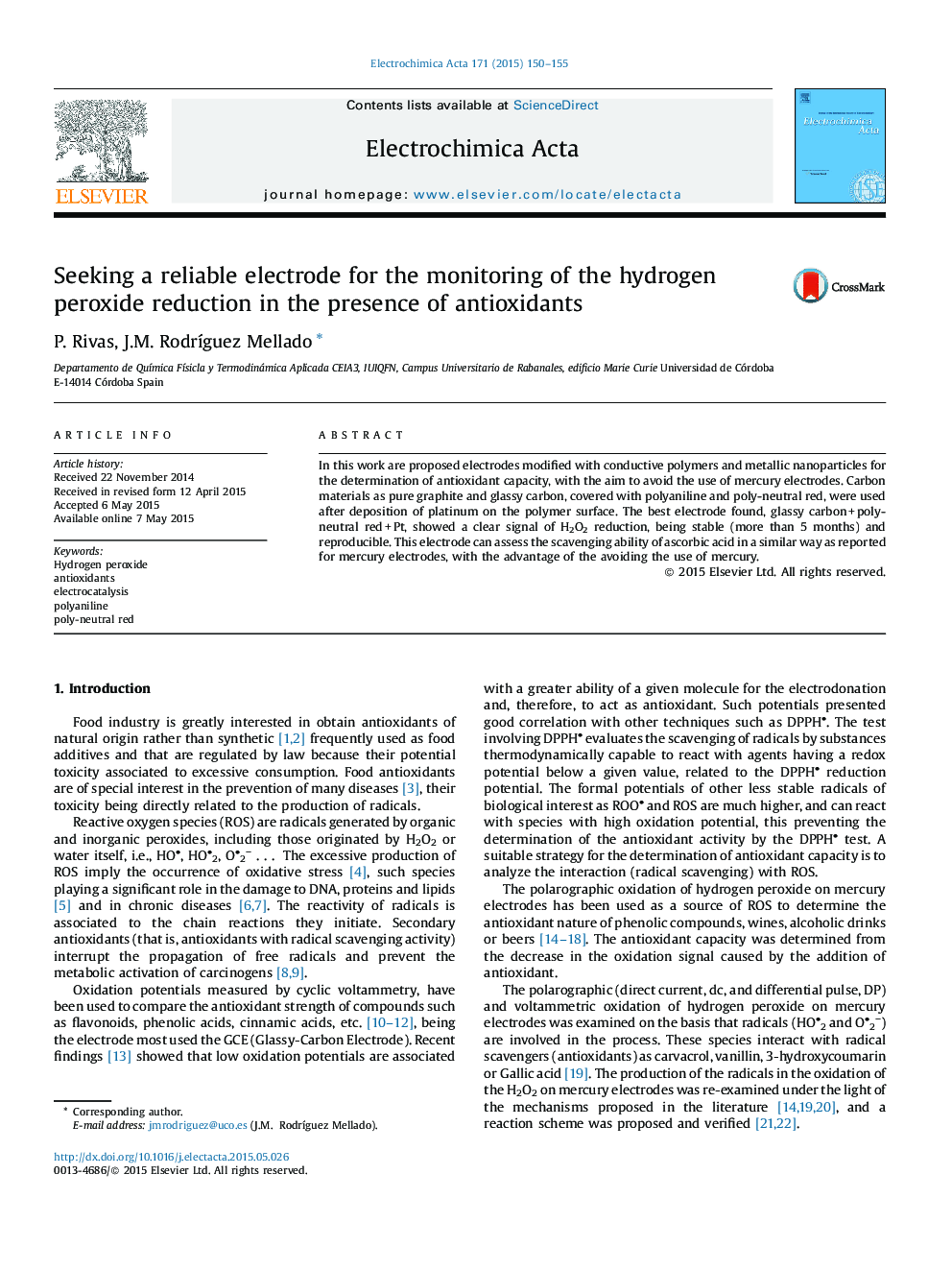| Article ID | Journal | Published Year | Pages | File Type |
|---|---|---|---|---|
| 183939 | Electrochimica Acta | 2015 | 6 Pages |
•Electrodes based on carbon (graphite and glassy-carbon) covered by conducting polymers and Pt nanoparticles have been prepared and studied.•Conducting polymers were PANI (polyaniline) and PNR (Poly-neutral red), being the GCE/PNR/Pt electrode the most reliable for the monitorization of H2O2 reduction.•The GCE/PNR/Pt electrode can be used to assess the scavenging ability of antioxidants, substituting the mercury electrode.
In this work are proposed electrodes modified with conductive polymers and metallic nanoparticles for the determination of antioxidant capacity, with the aim to avoid the use of mercury electrodes. Carbon materials as pure graphite and glassy carbon, covered with polyaniline and poly-neutral red, were used after deposition of platinum on the polymer surface. The best electrode found, glassy carbon + poly-neutral red + Pt, showed a clear signal of H2O2 reduction, being stable (more than 5 months) and reproducible. This electrode can assess the scavenging ability of ascorbic acid in a similar way as reported for mercury electrodes, with the advantage of the avoiding the use of mercury.
